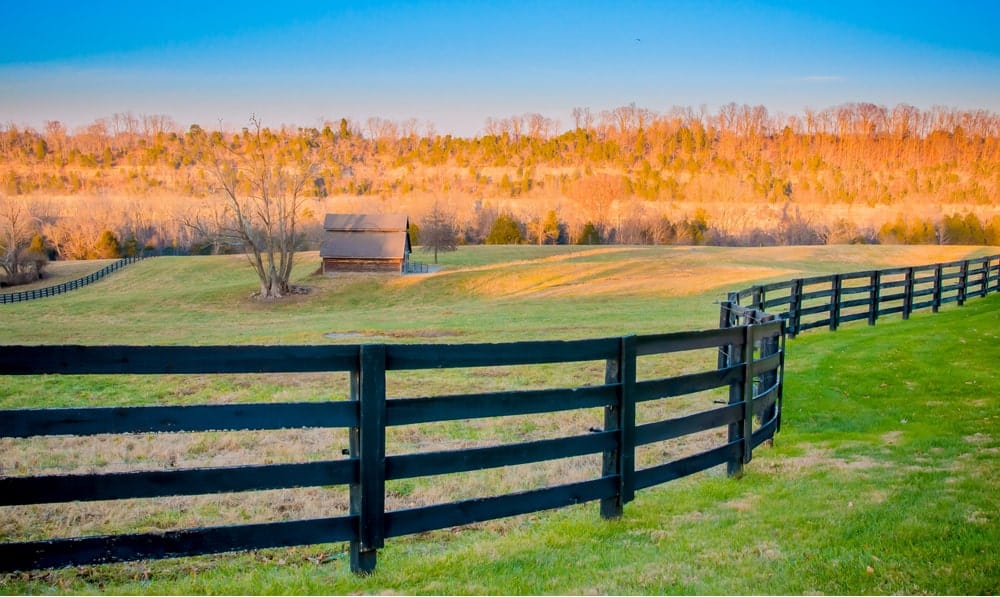Keeping Rural Neighbors and Animals Out
By Erik L Walter – Partner
On September 30, 2008, the Ohio legislature passed changes to the existing laws relating to line fences in unincorporated areas which created new rules for fences constructed on the line between two properties in such unincorporated areas.
It also established the process for resolving disputes over those fences.
The largest change in the law was altering the rule of “equal shares” for line fences. Specifically, with minor exceptions, under the old law, adjacent landowners were required to share equally in the cost of building and maintaining a line fence.
New Rules of Responsibility
That approach has now been replaced with two different rules of responsibility.
Individual Responsibility
First, a rule of “individual responsibility” now applies to new fences; and a landowner will be individually and solely responsible for building and maintaining the new fence.
Equitable Shares
Secondly, as to previously existing fences, the rule of “equitable shares” applies which requires the responsibility be apportioned between adjoining landowners after consideration of six fairness factors.
This law also changed the process for resolving line fence disputes in that landowners may choose to take a line fence dispute to the Court of Common Pleas in the county where the fence is located or the Board of Township Trustees where it is located. Finally, it contains standards for new line fences that contain livestock and addresses issues such as obstruction of line fence construction and access to adjoining land.
With this noted, here are some of the highlights of this law.
Ohio’s Line Fence Law Highlights
1. Applies Only to Unincorporated Areas
First, Ohio’s line fence law–also referred to as the “partition fence law”–establishes rights and obligations for fences that are placed on the division line between properties in Ohio’s unincorporated areas. Accordingly, it does not apply to all properties—only those in unincorporated areas–and does not apply to the enclosure of lots within municipal corporations, adjoining lots outside of a municipality, property governed by railroad laws, or property governed by a written agreement entered into and recorded by the landowners.
2. Different Rules of Responsibility
Second, this law creates different rules of responsibility for line fences, depending upon the type of fence at issue: (1) an “equitable shares” rule applies to line fences that existed before September 30, 2008, (2) a rule of “individual responsibility” applies to “new” fences built after September 30, 2008, and (3) the old “equal shares” rule applies to certain governmental fences.
3. Liability for Livestock Negligence
Next, an owner who negligently permits his or her livestock to run at large will be liable for all damages resulting from injury, death or loss to person or property caused by the livestock on the premises of another.
4. Shared Responsibilities for Pre-September 30, 2008 Fences
Fourth, for fences existing prior to September 30, 2008, parties must “equitably” or “fairly” share responsibility for building or maintaining the fence unless a written agreement, recorded with the County Recorder, was entered into between the parties addressing responsibility for the fence.
In assessing the fairness, six factors are considered in determining each landowner’s share of responsibility:
(a) the topography of the properties,
(b) presence of waterways
(c) presence of trees,
(d) risk of trespassers,
(e) importance of marking the division line and
(d) presence of livestock.
5. Determination of Equitable Shares
Fifth, a formal determination of a landowner’s equitable share can be accomplished by either landowner filing a line fence “complaint” with the Board of Township Trustees or the Court of Common Pleas where the fence is located. However, landowners can agree to establish their equitable shares themselves or continue to maintain the line fence as they did before the law changed in 2008.
6. Rules for New Line Fences
Next, as to new line fences—placing a line fence where one was not in existence—the responsibility for such a fence is solely on the landowner who wants or plans to use the fence. However, if an adjoining neighbor uses a new line fence, the party constructing it may have a right to seek reimbursement for the fence from the neighbor if he or she filed Affidavits establishing the costs of the fence.
This is important because the right to seek reimbursement exists if the neighbor uses it anytime within 30 years of its construction.
Consult with an Expert Zoning Attorney
In conclusion, this article is intended to provide broad, general information about Ohio’s line fence law. It is not intended to be legal advice. Should you have any specific questions or have a legal problem regarding this topic, please contact the offices of Dworken & Bernstein for assistance.
The information presented in this post is not legal advice and does not form a lawyer/client relationship. Laws and circumstances can differ and change.
Please contact us for a personal review of your situation







